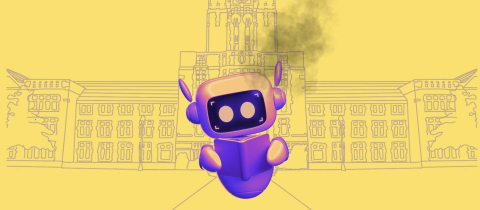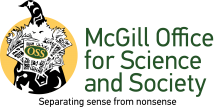It was the 1960’s and cheese producers were cheesed off. People were just not eating enough veal. Slaughterhouses were running short of calf stomachs and the cheese industry was feeling the pinch. There was not enough rennet to meet the demands of turophiles (that's "cheese lovers" from the Greek “turo” for cheese) around the world.
Rennet is a complex of enzymes critical to the cheese making process. At least if you want to indulge in something that is a little more exciting than cottage cheese. Traditionally, these enzymes, namely chymosin and bovine pepsin, have been isolated by washing, drying, macerating and brining the lining taken from the fourth stomach of calves. Both enzymes can coagulate milk and convert it into cheese. Why does the stomach lining of calves contain these enzymes? Because they are needed for proper digestion! If milk did not coagulate to some extent in the stomach, it would flow through the digestive tract too quickly and its proteins would not be sufficiently broken down into absorbable amino acids.
Enzymes are specialized protein molecules that serve as biological catalysts. They make possible the myriad of chemical reactions that go on in live organisms all the time. Specifically, chymosin and bovine pepsin are proteases, which means that they catalyze the breakdown of proteins, a task that is central to the milk coagulation process. Milk consists of about 87% water, 3.5% fat, 5% lactose, 1% minerals and 3.5% protein. The protein content consists mostly of casein molecules which are insoluble in water and aggregate into tiny spheres called micelles. Since their density is comparable to the surrounding solution, micelles remain suspended. Actually, there are three kinds of casein molecules, referred to as alpha, beta and kappa-casein. Within the micelle, the alpha and beta caseins are curled up like a ball of string and are held together by kappa casein which functions much like an elastic band. The job of chymosin is to break the band and allow the casein molecules to stretch out and form a tangled network of protein molecules that settles out of the solution. Fats and minerals get snared in this protein net, and presto, we have cheese!
Chymosin is the ideal enzyme for catalyzing this process. In an acidic environment it snips kappa-casein specifically, allowing the other caseins to unwind. In the stomach, that acidic environment is created by cells that secrete hydrochloric acid, whereas in cheese-making a bacterial starter culture that converts lactose into lactic acid is added before the rennet. Bovine pepsin is not quite as suitable because it has a more general protease activity, snipping caseins in a variety of ways. This weakens the protein network needed to trap fat and results in a lower yield of cheese. On top of that, some of the protein fragments it produces have a bitter taste and subtly alter a cheese's flavor profile.
By the 1960s the shortage of rennet was becoming critical. It was then that researchers discovered that certain fungi, Mucor miehei being a prime example, produce enzymes that can cleave proteins much like chymosin does. This meant that cheese could be produced without using any animal rennet at all. Not only did this address the rennet shortage, it also made possible the production of cheese that meets the needs of vegetarians. Such cheese is also kosher because there is no mixing of milk and meat. But purists claim that the taste is not the same and they may well be right. The fungal enzymes have greater proteolytic (protein breaking) activity than chymosin and can give rise to “off” flavors.
Then genetic engineering entered the picture and essentially solved the chymosin problem. The segment of DNA, the gene, that gives the instructions for the formation of chymosin was isolated from calf cells and was copied, or "cloned." It was then successfully inserted into the genetic machinery of certain bacteria (E. coli), yeasts (Kluyveromyces lactis) or fungi (Aspergillus niger) which dutifully churned out pure chymosin. Approved in 1990 by the Food and Drug Administration in the U.S., chymosin became the first product of genetic engineering in our food supply. It is 100% identical to that found in calf stomach, but because it does not come from animals it is acceptable to consumers who do not want meat products in their cheese.
Extraordinary precautions were taken before chymosin made by recombinant DNA technology was marketed. Regulators ensured that no toxins of any kind had been introduced and that no live recombinant organisms were present. Indeed, the product contained nothing but pure chymosin. Cheese made with it is completely indistinguishable from that produced with animal rennet. In any case, chymosin itself is degraded during cheese making and none is left in the finished product. Classic European cheeses like Brie, Camembert, Parmigiano and Emmenthal still use calf rennet although versions made with microbial or plant-based enzymes are available. In North America, over 80% of all cheese is made using chymosin produced by recombinant DNA technology. Cheese makers no longer have to worry about a shortage of calf stomachs and turophiles can satisfy their critical tastebuds. Thanks to biotechnology they can "say cheese" and smile.







